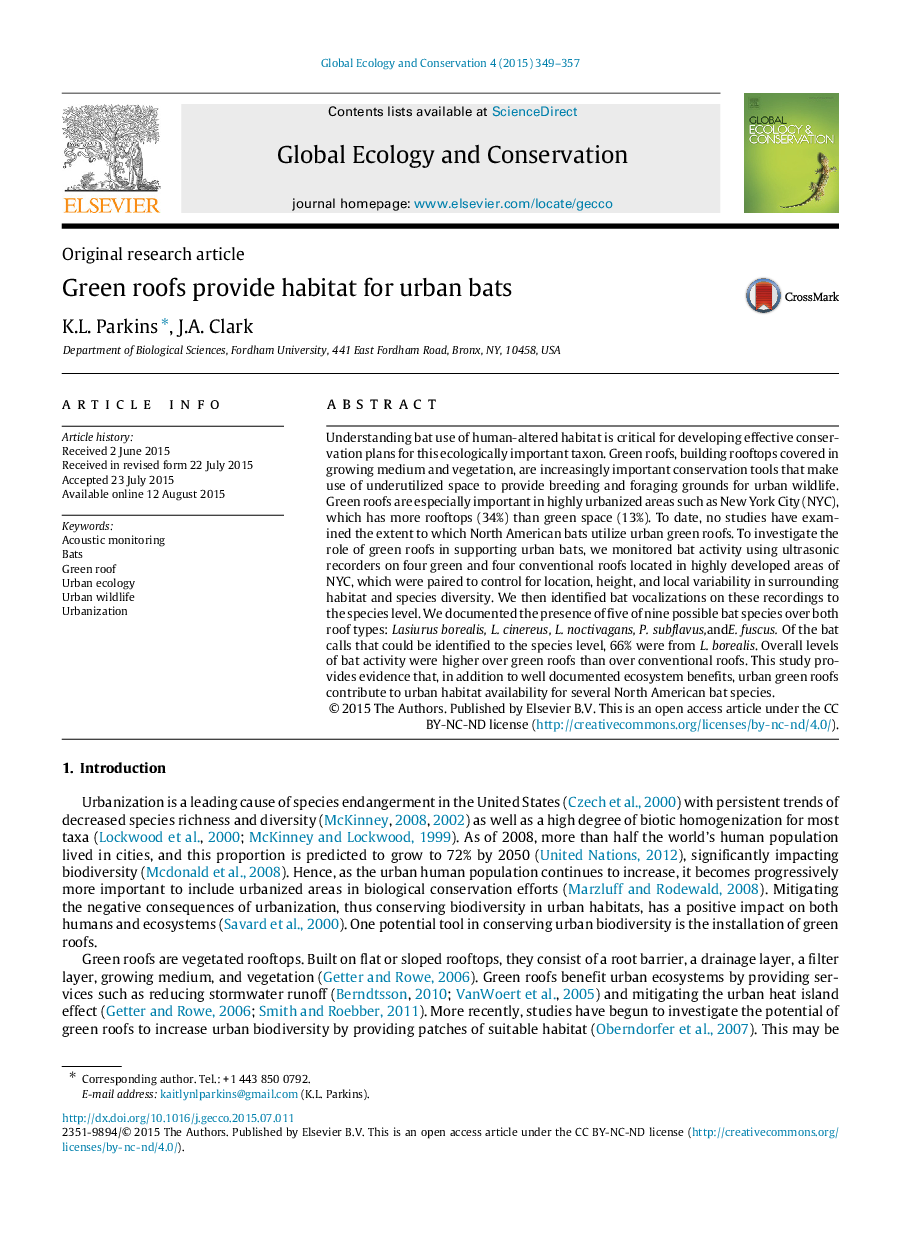| کد مقاله | کد نشریه | سال انتشار | مقاله انگلیسی | نسخه تمام متن |
|---|---|---|---|---|
| 4379507 | 1617663 | 2015 | 9 صفحه PDF | دانلود رایگان |
Understanding bat use of human-altered habitat is critical for developing effective conservation plans for this ecologically important taxon. Green roofs, building rooftops covered in growing medium and vegetation, are increasingly important conservation tools that make use of underutilized space to provide breeding and foraging grounds for urban wildlife. Green roofs are especially important in highly urbanized areas such as New York City (NYC), which has more rooftops (34%) than green space (13%). To date, no studies have examined the extent to which North American bats utilize urban green roofs. To investigate the role of green roofs in supporting urban bats, we monitored bat activity using ultrasonic recorders on four green and four conventional roofs located in highly developed areas of NYC, which were paired to control for location, height, and local variability in surrounding habitat and species diversity. We then identified bat vocalizations on these recordings to the species level. We documented the presence of five of nine possible bat species over both roof types: Lasiurus borealis, L. cinereus, L. noctivagans, P. subflavus,andE. fuscus. Of the bat calls that could be identified to the species level, 66% were from L. borealis. Overall levels of bat activity were higher over green roofs than over conventional roofs. This study provides evidence that, in addition to well documented ecosystem benefits, urban green roofs contribute to urban habitat availability for several North American bat species.
Journal: Global Ecology and Conservation - Volume 4, July 2015, Pages 349–357
